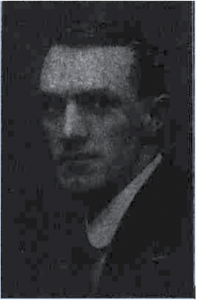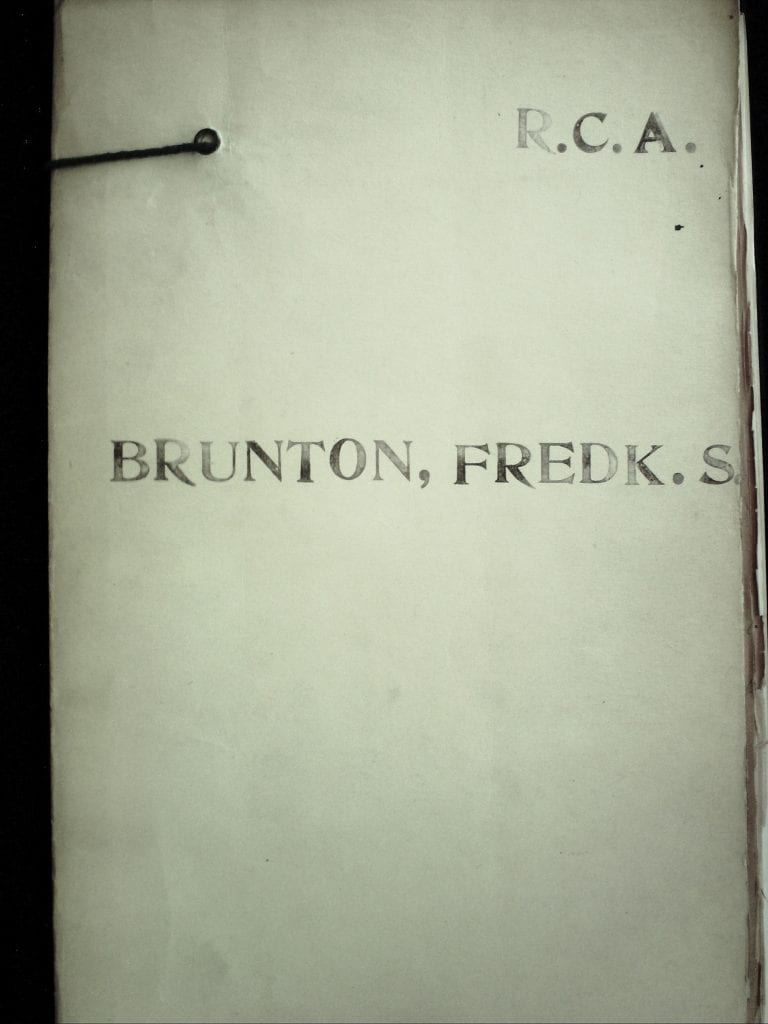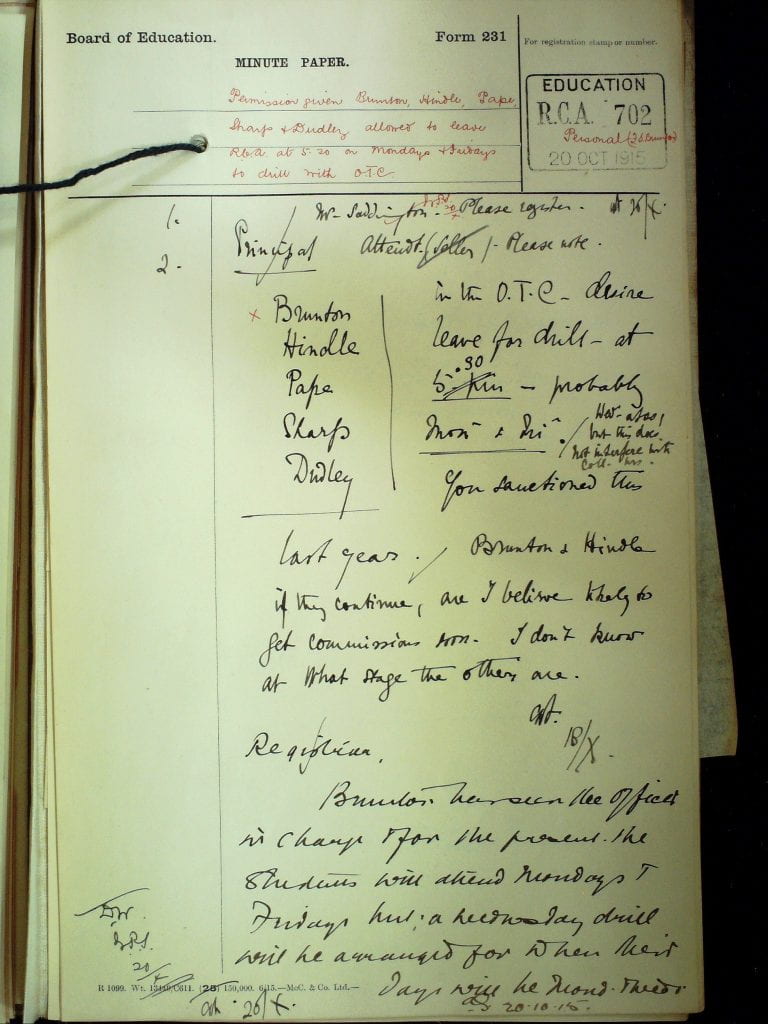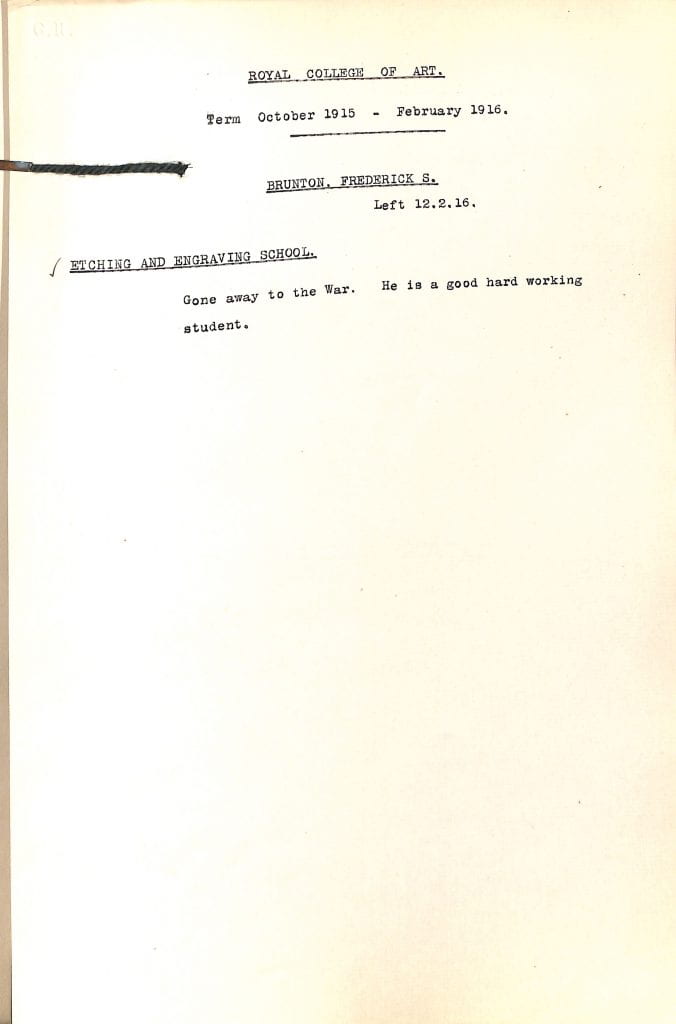
Born 9 June 1889
Died 9 September 1916
Studied at the RCA: October 1912 – possibly March 1916
Frederick Brunton, son of a cotton manufacturer – a description he used for himself when joining the Freemasons in 1915 while still studying – is noted in his student files as a ‘Painstakingly diligent worker’ whose ‘general conduct, attendance and progress have been most satisfactory’. He wrote proudly to the Registrar on 6 September 1915 that he and another student, George Dix, had been chosen from several other RCA students to join the Northern Territorial Force camp based at Perivale that August, in the hope of becoming officers, but was advised once there to continue training and ‘get more fit’. He also noted, in passing, how ‘Our drawing is very useful…’ because sketching was needed in planning an advance, and as a result he asked to move to the Painting school in the new term. It also appears that the College allowed him, and other students hoping for commissions, to leave for drill practice at 5.30pm every weekday.
He was called up in March the following year under the Lord Derby Scheme, serving first in the 10th Battalion of the East Lancashire Regiment, arriving in France probably some time in late July with the 2nd Battalion instead, now part of 24th Brigade (8th Division). He was perhaps already a sergeant.
His father, Alfred, wrote to the College informing them that Frederick had died on 9 September 1916, only a little over a month after his arrival in France. A newspaper account published a couple of weeks later reports that he was killed during a night raid on a German trench. The war diary of the battalion notes, in detail, that this raid was near the Hohenzollern Redoubt, north west of Lens, with map co-ordinates suggesting the target was a trench known to British soldiers as ‘Little Willie’ (referring to the Kaiser’s son). A search party went out to find Frederick at 4.20am, knowing he had been wounded. The officer reporting the action later records bluntly:
‘It is to be regretted that the “O.R.1 killed” was Sgt. BRUNTON who had undoubtedly done some very good work and who, had he lived, would have been able to throw considerable light on the doings of the left party [referring to the attacking troops being in three groups]. His revolver contained 5 empty cases. He was killed after leaving the enemy’s trench on the return journey, having one bullet wound to the head and another through the arm.’
A report in the local Burnley Express and Advertiser (23 September 1916) indicates that Frederick was, at least in part, also a victim of British barbed wire.
Frederick is buried at Vermelles British Cemetery, Pas-de-Calais, France.




